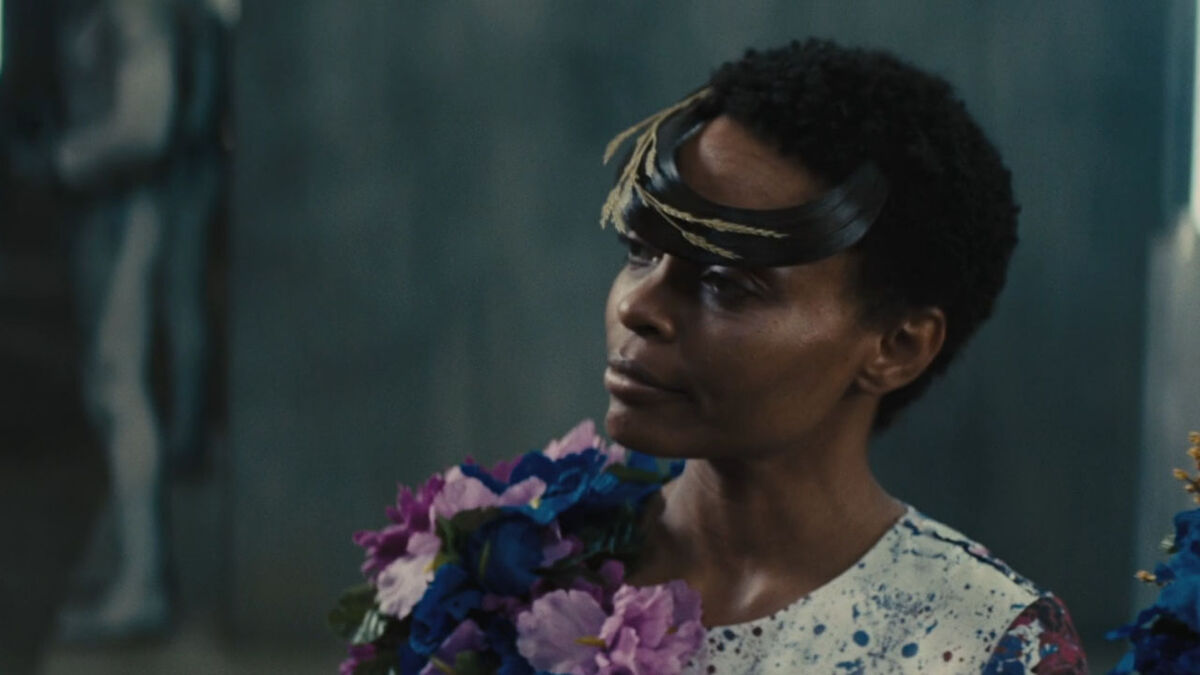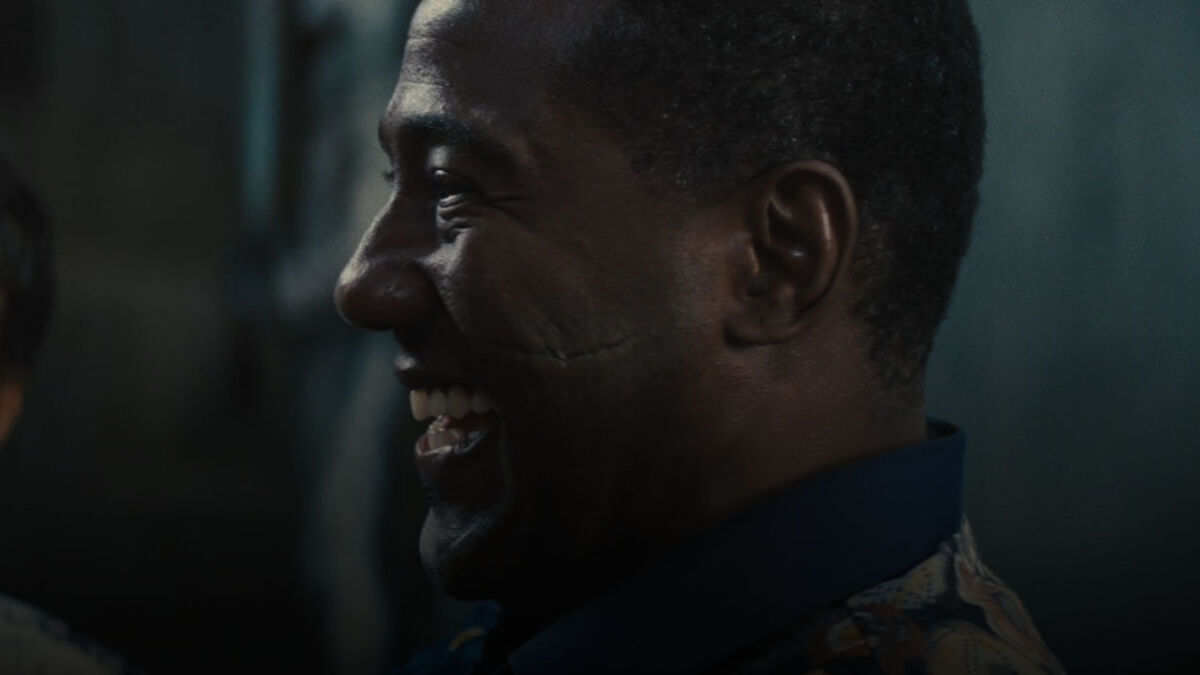It’s been eight years since the last film in The Hunger Games saga hit theaters, but that doesn’t mean there are no more games to play. Hunger Games novelist Suzanne Collins wrote a fourth book, The Ballad of Songbirds and Snakes, which told the previously unknown story of the tenth Hunger Games.
This week, that book is arriving on the big screen as The Hunger Games: The Ballad of Songbirds & Snakes, with Francis Lawrence, the director of every Hunger Games movie since the second one, back in the director’s chair. The film features Rachel Zegler as Lucy Gray Baird, the forerunner of Jennifer Lawrence’s iconic character, Katniss Everdeen. Tom Blyth also stars in the film as Coriolanus “Coryo” Snow, the future President of Panem who was played by Donald Sutherland in the first four movies.
While the film is offering us a look at the Hunger Games in their infancy, it will only be the third time that the annual battle to the death has been fully explored on-screen. There were 75 Hunger Games over three quarters of a century, many of whom were never named or identified in either the novels or the movies. So that’s why we’re skipping the unknown or unidentified winners and focusing on what we know about the players beyond Lucy Gray and Katniss.
For those who haven’t read the Songbirds & Snakes book, be aware there are some spoilers in the listing for the 10th Games.
The first Hunger Games were held 74 years before the first novel in the series, in the aftermath of the First Rebellion that was put down by the Capitol. As punishment for their defiance, each district was required to send two tributes: a boy and a girl between the ages of 12 and 18. From there, the kids were meant to fight to the death in a televised event until only one winner remained.
Curiously, the name of the first Hunger Games victor, and what District they were from, has never come up in either the novels or the films. Therefore we have no idea what happened the first time that this battle royal was held. Perhaps Collins is saving that story for some time down the line.
Spoilers for The Ballad of Songbirds and Snake are included in this entry. 
The first nine Hunger Games winners are currently unknown, but thanks to The Ballad of Songbirds & Snakes, we do know who won the 10th Hunger Games, District 12’s Lucy Gray Baird. Lucy Gray was mentored by Corioloanus Snow, which proved to be one of the deciding factors in her favor, given Snow cheated more than once to help her win, breaking the rules against outside interference.
At this point in the Hunger Games’ history, a lot of the pageantry hadn’t come along yet. Lucy Gray and her fellow tributes were still chosen by random chance but they didn’t get to enjoy the lap of luxury before fighting to the death. Instead, they were housed in the Capitol’s zoo under harsh conditions and several of the tributes didn’t even live long enough to fight in the game, though the full list of those chosen in the reaping included District 1’s Facet and Velvereen, District 2’s Marcus and Sabyn, District 3’s Circ and Teslee, District 4’s Mizzen and Coral, District 5’s Hy and Sol, District 6’s Otto and Ginnee, District 7’s Treech and Lamina, District 8’s Bobbin and Wovey, District 9’s Panlo and Sheaf, District 10’s Tanner and Brandy, District 11’s Reaper and Dill, and District 12’s Jessup.
.The Arena was a simple old stadium, though a rebel attack prior to the Games would allow the Tributes to hide in tunnels below, and likely influenced future Games purposely making their Arenas much more detailed and nuanced.
These Hunger Games were also key to Snow’s rise to power because they were the first year that Mentors were used to train the tributes. Snow became one of the first Mentors because he was among the top seniors from Capitol Academy, as the decision to use previous Victors as Mentors would come later. The 10th Hunger Games was also notably the first event to have a host, Lucretius “Lucky” Flickerman, all in the name of making it more entertaining for the masses.

The Hunger Games: Catching Fire introduced the oldest living victor in the history of the games: Mags Flanagan. When she was only 16 years-old, Mags emerged as District 4’s winner in the 11th annual games, and it’s believed that she was the first person to move into Victors’ Village and go on a Victory Tour. But the exact details of how Mags won have not been revealed.

Catching Fire never makes it clear when Woof won his Hunger Games, but he was the second-oldest living victor behind Mags. Woof came from District 8, and he had a propensity for eating bugs that may have helped him when food was scarce. But by the time Woof was called upon again for the 75th Hunger Games, his mind was so far gone that he was one of the first tributes to die.
For the first-ever Quarter Quell, each district was ordered to vote on who their tributes should be. Whoever came out on top was long dead by the events of the original novels. It should also be noted that Katniss and Peeta were horrified at the idea that the people of their own districts would betray someone by voting them into the games.

Although Seeder only briefly appears in the Catching Fire movie, the novel gave District 11’s oldest-living victor a bigger role. Seeder was able to assure Katniss of the safety of the families of Rue and Thresh (Katniss’ respective friend and temporary ally during the 74th Games). Seeder also spoke out more forcefully against Snow in the novel, but sadly was among those killed immaturely when the 3rd Quarter Quell began.

District 3’s Beetee is notable for winning his edition of the Hunger Games by outsmarting his fellow tributes. While Beetee lacks the physical attributes of typical tributes, his mind proved to be a deadly weapon when he fashioned a trap for his remaining rivals and successfully electrocuted them.
By the time of the 3rd Quarter Quell, Beetee was still of sound mind and in fairly decent physical condition for a man his age. He also proved to be one of Katniss’ most loyal friends and allies.

Not even victors are assured of making it out of the Hunger Games intact. Porter Millicent Tripp, from District 5, exemplified this when she won the 38th Hunger Games. Although she survived, Porter suffered a serious spinal injury in the process. That’s why Porter appears in a neck brace in the photos from her Victory Tour.
Porter doesn’t appear in the novels, but her status as a winner was revealed during the promotional campaign for The Hunger Games: Catching Fire.

Like Beetee, Wiress came from District 3 and she was renowned for her technical skills. We don’t know which Hunger Games she won, or exactly how she won. But it’s been theorized that Beetee was her mentor, and she may have emerged victorious in a similar clever manner as he did.
Wiress and Beetee were forcibly put into the 3rd Quarter Quell, where they allied with Katniss. Only Beetee was able to consistently communicate with Wiress, before Katniss picked up on it as well. Wiress didn’t live long in her return to the games, but her observations helped her friends survive.

In District 2 (along with District 1 and 4), there are many Career Tributes or “Careers,” who do little but train to compete in the Hunger Games. Brutus was the oldest living survivor from District 2, and dedicated to his calling. He was still extremely dangerous by the time he was drawn into the 3rd Quarter Quell. Brutus also has the distinction of being the last person to die in the 75th Hunger Games, courtesy of Peeta.

Little is known about the 45th Hunger Games, but Catching Fire’s novel revealed that the winner was Chaff, from District 11. But Chaff’s victory came with a price, as he lost his arm at some point during the games. Though Chaff made it far into the 3rd Quarter Quell, he was separated from Katniss during the brunt of it, with few specifics known on what occurred before he was killed by Brutus.

Unlike the vast majority of the previous games, we know quite a bit about the 50th Hunger Games, AKA the 2nd Quarter Quell. This was the game that was ultimately won by Katniss and Peeta’s eventual mentor, Haymitch Abernathy, who was also from District 12. But he wouldn’t have lived without the timely intervention of another District 12 tribute, Maysilee Donner.
Because the Capitol loved adding twists for the Quarter Quells, the 50th Hunger Games featured 48 tributes instead of 24, which were made up of four tributes from each district. Maysilee saved Haymitch from a Career, despite the fact that they barely knew each other. They stayed together long enough to get close, but Maysilee cut their alliance short because she didn’t want to turn on Haymitch.
Unfortunately, Maysilee died via a savage bird attack after discovering that the force field surrounding the arena repelled objects. Haymitch mourned for Maysilee and put that knowledge to use when he tricked a District 1 tribute into throwing her ax at him near the force field. The ax bounced back and killed the young woman, leaving Haymitch the winner. The Capitol was not pleased by this turn of events, and Snow had Haymitch’s family murdered in retaliation. Like the other victors, Haymitch was forced to serve as a mentor for District 12 tributes that came after him.

Despite hailing from District 2, Lyme was a prominent Commander in the second rebellion against the Capitol. Katniss and Peeta recognized Lyme as a previous Hunger Games winner. The details of how Lyme won are lost to history, but she was one of the most prominent survivors who wasn’t picked to fight in the 3rd Quarter Quell. Unfortunately, Lyme is noticeably absent near the end of Mockingjay, when the seven surviving members of the Hunger Games were given the chance to decide whether the games should continue. This suggests that Lyme gave her life for the rebellion.

While we don’t know which Hunger Games Cecelia won, it is revealed that she came from District 8. More alarmingly to Katniss, Cecelia was later the mother of three children, all of whom clung to her when she was chosen to return for the 3rd Quarter Quell. Cecelia perished early in the 75th Hunger Games, and Katniss grieved for her and for what it meant to her children.

Blight came from District 7, and was the previous victor who was paired with Johanna. Next to nothing is known about Blight’s Hunger Games win. But Johanna did show some empathy when he died during the 3rd Quarter Quell. It was later revealed that both Blight and Johanna were in on the plan to make sure that Petta and Katniss survived the 75th Hunger Games.

District 6’s male and female Morphlings were never given proper names in the book or the movie. But they must have each won a Hunger Games of their own, since there were no co-winners until the 74th Hunger Games.
The reason why they were called Morphlings is that they were hopelessly addicted to morphling, a narcotic painkiller that allowed them to cope with their previous Hunger Games experience. They were also apparently in on the rebellion plan, as the female Morphling saved Peeta’s life before perishing in the 75th Hunger Games. Her companion had been murdered a short time before.

Enobaria, District 2’s Hunger Games female veteran, had a very distinct calling card from her victory: Her sharpened teeth. When Enobaria competed in the 62nd Hunger Games, she killed one of the male tributes by ripping his throat out with her teeth. Afterwards, she had her teeth sharpened in a nightmarish fashion, which only enhanced her reputation as a killer. Enobaria would become one of the few survivors of the 3rd Quarter Quell, thanks to its premature ending.

Now for a true rarity in the history of the Hunger Games: Back-to-back winners from District 1 who also happened to be siblings. The victor in the 63rd Hunger Games was Gloss, and his sister, Cashmere, won the following year.
This wasn’t a total coincidence, since both Gloss and Cashmere were Careers. They spent their entire lives training to be ready for the Hunger Games, and they both rose to the occasion. Cashmere and her brother proved to be deadly foes in the 75th Hunger Games, which forced Katniss and her allies to kill them.

We never get to see the 65th Hunger Games, but it sounds like Finnick Odair put on quite a show. Finnick came from District 4 and he was the youngest ever Hunger Games winner at only 14 years-old when he vanquished the competition.
Finnick’s fighting skills came from the fact that he was also a Career, and his opponents underestimated him because of his age. One of Finnick’s sponsors sent him a spear during his winning year, and he put it to good use. Finnick also proved to be a true ally to Katniss and was part of the conspiracy to protect her and Peeta during the 3rd Quarter Quell.

District 1 had another champion when Augustus Braun emerged victorious during the 67th Hunger Games. Like Finnick, Augustus was incredibly popular among the Capitol crowd. He was such a fan favorite that he earned two nicknames: Panem’s Favorite Son and the Cavalier Career.
What happened to Augustus after winning his Hunger Games is unclear.

Not every Hunger Games winner is a killer. But it’s doubtful there were many winners like Annie Cresta, a young woman from District 4 who won without killing anyone at all. During her stint in the games, Annie was traumatized by the death of the boy she was paired with from District 4. So she hid instead of trying to fight.
The odds worked out in Annie’s favor when the arena flooded, and she proved to be the best swimmer of the tributes. Thus Annie swam her way to victory, but she was severely disturbed by her ordeal. When glimpsed in the novel, Annie panicked hysterically when she was chosen for the 3rd Quarter Quell. The only thing that spared Annie from that fate was Mags’ decision to volunteer to take her place.

District 7’s Johanna Mason played a long con on her way to victory in the 71st Hunger Games. But it’s the kind of trick that only works once. Prior to the games, and even during the early part of the competition, Johanna portrayed herself as weak and cowardly.
This turned out to be a very effective ruse, because when the time came to kill her fellow tributes, Johanna didn’t hesitate. Although the Capitol typically forced the winners into sexual trafficking for VIPs, Johanna refused to go along with that. In turn, Johanna’s family was murdered, which left her angry and bitter. But not so bitter that Johanna would pass on a chance to help Katniss and Peeta make it out of the 3rd Quarter Quell.

We know that the 73rd Hunger Games was won by a boy from District 2, but his name is never mentioned. It’s assumed that he was a Career, but he was not mentioned at the 3rd Quarter Quell Reaping, nor was he among the surviving Hunger Games winners at the end of the Second Rebellion. However, one detail we do know about these games was that the arena was made to appear as though it were the rubble of a ruined city, which became a particular favorite of Hunger Games host Caesar Flickerman.

If you’re read the first book or seen the first movie, then you know all about the 74th Hunger Games. It took place over 18 bloody days, and it was the first Hunger Games to feature two winners: Katniss Everdeen and Peeta Mellark, who were the last survivors among a group that originally included District 1’s Marvel and Glimmer, District 2’s Cato and Clove, District 4’s Marina, District 5’s Foxface, and District 11’s Thresh and Rue. The Head Gamesmaker, Seneca Crane, made the rule change mid-game to give the audience at home even more of a rooting stake in Katniss and Peeta’s romance story.
When Katniss and Peeta became the final two survivors, Crane reversed his ruling as he actually expected them to turn on each other. But when the duo threatened to commit double suicide and leave the game without any winner, Crane hastily declared them to be co-winners. That act of defiance put both Katniss and Peeta in Snow’s crosshairs – and would lead to Crane losing his life for his mistakes.

Because Katniss and Peeta were becoming symbols of rebellion, Snow ordered the 75th Hunger Games, a.k.a. the 3rd Quarter Quell, to draw from all surviving members of the previous games. Snow knew that since Katniss was District 12’s only living female tribute that she would be forced to compete. Peeta wasn’t initially chosen, but he volunteered, taking Haymitch’s place.
District 1 was represented by Gloss and Cashmere, while District 2 had Brutus and Enobaria. District 3 had Beetee Latier and Wiress, and District 4 called upon Finnick Odair and Mags. The tributes from Districts 5, 6, 9, and 10 were unnamed in the book and in the movie adaptation of Catching Fire, though District 6’s Morphlings are more distinctly identified.
Rounding out the other tributes were Blight and Johanna Mason from District 7, Woof and Cecelia from District 8, as well as Chaff and Seeder from District 11. There was no winner, because Haymitch Abernathy and his allies brought a few of the tributes in on the plan to escape the arena and keep Katniss and Peeta alive as symbols of rebellion. But the plan was only partially successful. Katniss, Finnick, and Beetee were rescued by District 13 forces, while Johanna, Peeta, and Enobaria remained in captivity.

Technically, there was no 76th Hunger Games, although Katniss characterized the rebellion as an extension of what she and her allies had previously gone through. Once the Capitol fell, Interim President Alma Coin suggested that the final Hunger Games be played with the children of the elite, including President Snow’s granddaughter.
Peeta Mellark, Annie Cresta, and Beetee Latier voted against it, while Johanna Mason, Enobaria, and Haymitch Abernathy were in favor. Katniss cast the deciding vote for the final Hunger Games, but only if she could be the one to kill Snow. However, Katniss’ true agenda was to lure Coin into a position where Katniss could assassinate her. Once Katniss killed Coin, the idea of another Hunger Games was abandoned.
To learn more about the 10th Hunger Games and their aftermath, check out The Hunger Games: The Ballad of Songbirds and Snakes when it opens in theaters on Friday, November 17.
Related New
Related